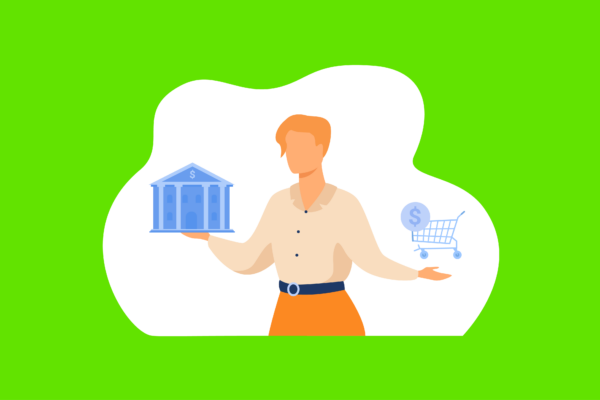Episode Description:
This week’s COMPLY Podcast episode features Paul Wilmore. Paul spent 19 years at Barclays in US Consumer Business in a number of roles, last of which was Chief Marketing Officer. From there Paul became the CMO at Cardtronics, the world’s largest ATM operator, and is now the Chief Operations Officer here at PerformLine.
During today’s episode Paul and I discuss:
- The evolution of the fintech, partner bank, and banking as a service (BaaS) ecosystem
- The opportunities and challenges of these new partnerships
- The importance of collaboration between these parties as it pertains to compliance
Show Notes:
- The Compliance Checklist for Bank-Fintech Partnerships and BaaS Providers: https://bit.ly/3tFhXrR
- Evolution of Compliance for Bank, fintech, and BaaS Partnerships Blog: https://bit.ly/3hPZm9Y
- Managing Compliance Risk for BaaS and Bank-fintech Partnerships Blog: https://bit.ly/3TIsFIV
- Follow Paul: https://www.linkedin.com/in/paul-wilmore-6b1646/
- Follow Ashley (AC): https://www.linkedin.com/in/ashley-cianci
Subscribe to COMPLY: The Marketing Compliance Podcast
About COMPLY: The Marketing Compliance Podcast
The state of marketing compliance and regulation is evolving faster than ever, especially for those in the consumer finance space. On the COMPLY podcast, we sit down with the biggest names in marketing, compliance, regulations, and innovation as they share their playbooks to help you take your compliance practice to the next level.
Episode Transcript:
Ashley:
Hey there, COMPLY podcast listeners. We’re super excited for this week’s podcast with Paul Wilmore. Paul spent 19 years at Barclays in US Consumer Business in a number of roles, last of which was Chief Marketing Officer. From there, Paul became the CMO at Cardtronix, the world’s largest ATM operator, and is now the Chief Operations Officer here at PerformLine. During today’s episode, Paul and I discuss the evolution of the fintech, partner bank, and banking-as-a-service ecosystem, the opportunities and challenges of these new partnerships, and of course the importance of collaboration between these parties as it pertains to compliance. Thanks for listening and enjoy the show.
Hi Paul, thanks so much for being here today.
Paul:
Hey! Thanks, AC. Appreciate it.
Ashley:
Awesome. Well, first I think it’d be super helpful for our listeners if you wanted to give a quick introduction of yourself.
Paul:
Yeah, sure. So, my name’s Paul Wilmore. I’m the Chief Operating Officer here at PerformLine. And, quick background on myself, I spent about 19 years at Barclays in their US Consumer Business through a different variety of different roles, the last of which was their Chief Marketing Officer, very familiar with sort of a B2B space, that was primarily our business. From there I moved on to Cardtronics, which is the world’s largest ATM operator. I was their Chief Marketing Officer for about three years. And now I found myself at PerformLine. So, happy to be here. You know, I used to be a client of PerformLine about eight or nine years ago, I brought them in when I was at Barclays. So I’ve got a long history with PerformLine and happy to be part of the team now.
Ashley:
Awesome. We’re happy to have you.
So it should come as no surprise whey we asked Paul to be a part of today’s podcast given that background.
So just to level set for today’s topic here at PerformLine, we’re also not strangers, so the consumer finance ecosystem, and one area that’s been coming up more and more I would say in the past year has been this relationship between fintechs and their partner, or sponsor, banks; we’ve heard both terms out in the wild. And then banking-as-a-service providers. More and more we’re going to conferences, we’re hearing industry thought leaders speak about these relationships.
So why don’t we start there, Paul? I think it’d be super helpful for our listeners if you just gave a quick overview of the evolution of this space between banks, fintechs, and BaaS partnerships.
Paul:
Yeah, yeah. So it’s amazing, it’s evolved quite a bit over the last probably 10 to 15 years. Right?
If you wind the clock back, I think banks used to be scared death of fintechs, right? The banks were slow, they had generic products, they were operating out of brick and mortar banks. Fintechs were nimble, they were all digital, and they targeted and served micro-segments of the population. And I think in many ways that really scared the traditional banks.
You wind the clock forward to now and you see that the banks have become a lot more nimble. They’re much more digital. They’ve embraced a lot of this innovation that the fintechs have pioneered.
And the fintechs have realized that being a bank’s really hard, right? There’s a lot of infrastructure, there’s a lot of compliance, there’s a lot of stuff that happens behind the scenes that a lot of these fintechs don’t have.
So I think what it’s really evolved to is more of a symbiotic relationship, where the banks are providing a lot of the infrastructure, a lot of the compliance, a lot of the backbone of banking. While the fintechs are the ones that are providing innovation around products, around customizing the customer experience, around building more targeted marketing programs, especially in the online channels.
So I think these two working together have created this new kind of partner bank-fintech relationship, right? There are about 90 partnership banks in the US today. By some projections, this ecosystem is gonna be a $75 billion ecosystem by 2030. So it’s only gonna continue to grow, and I think as community banks are trying to find ways to compete with regional banks and traditional banks, you’re gonna see more and more of them leveraging their balance sheet through these partnership agreements so that they can grow faster than they normally would in sort of a real localized market.
Ashley:
That makes sense.
Paul:
It’s an exciting time.
Ashley:
It is. And it’s, I feel like in the quickest way to say it, they’re both doing what they do best, right? The banks are kind of leaning back on that, what they do best and the fintechs are moving forward in innovation.
Paul:
And you’re seeing new players sort of enter the, the ecosystem, right? These, these companies called middleware companies that are actually creating the plumbing that connects the bank to the fintech , and so you’re seeing a lot of folks find ways to sort of make this ecosystem more efficient and more effective over time.
Ashley:
Absolutely. I think not even just the partnerships between banks and fintechs and now BaaS, or this kind of middleware as well, but just consumer finance in the past, I would say five, six, maybe even a decade at this point. It’s amazing to watch and to be a part of because it’s just evolving so quickly.
Paul:
Yeah absolutely, it’s new products, it’s new touch points, it’s embedded finance, it’s a lot of things. It’s an exciting time to be in the payment space.
Ashley:
It is. Absolutely. So what are some challenges you see as a part of this ecosystem between these partnerships?
Paul:
Yeah, you know, I think there’s a lot, if you think about the core of the partnership or the relationship needs to be open and honest, transparent communication. And, you know, that’s not always easy in a partnership type world.
Ensuring that the partner banks have the tools and technology to watch all of their fintech partners right, at scale, that’s a hard thing to do. So how do you automate that?
And I think that the regulators are trying to figure out this space as well, right? So over time we’ve sort of seen the regulators both at a state and a federal level, try to figure out who’s ultimately responsible for the regulatory oversight of these products. Is it the bank who owns the charter and the balance sheet? Is it the fintech who’s doing all the marketing to consumers? And the answer is, it’s really probably both.
And they both need to be monitoring those things, but you know, for a lot of these fintechs, they don’t have that infrastructure. So the bank really needs to both provide a lot of that oversight and guidance. It’s a little bit of this trust and monitor type of environment, right? Which is a tough thing to do, especially at scale as you bring on more and more partners.
So I think the space will continue to evolve. I think the regulators are gonna continue to define the space and we’ve seen some recent regulatory enforcements where it’s at, you know, clearly putting the emphasis and the onus back on the partner bank. But we’ve also seen recently seen some enforcements especially at the state level, come down and say, well, it’s the fintech who owns the product and profits from the product, therefore they’re ultimately the one responsible. So, you know it’s continuing to be interpreted by the regulators.
Ashley:
Yeah it’s definitely moving pieces, so it’s important to stay on top of it. And there’s two things I wanna mention that you just talked about. So just the sheer number of partners, right? So a bank can have multiple fintech partners, not just one. And then at the same time, those fintechs, depending on their business and how they work, can also have multiple merchant or affiliate partners who are possibly marketing on their behalf. So when you think about it, a bank or a partner bank or sponsor bank, and those fintechs can have many, many, many…
Paul:
Hundreds if not thousands of touch points. You’re exactly right. And, you know, for the partner bank, it’s not just about the regulatory piece of this, it’s really about where their brand is. Right? And I think obviously most partner banks know who their fintech partners are and kind of the brand’s gonna rest there, but to your point, it’s the layer below that, or two below that, that I’m sure they’d have no idea that their brand is being showing up on, you know “Joe’s Tire’s” website. And how is it being positioned and how is it being used? And so that’s the tools and the infrastructure that needs to be built to make sure that you are not just monitoring the things you know about, but also discovering the ones that you don’t know about.
Ashley:
Absolutely, absolutely. And then the second piece of what you said too – the states – having more enforcement actions come from the states, I think is something that everyone should be more aware of over the next year, probably for the foreseeable future, right? Just given the regulatory environment. So it’s important to note as well.
Paul:
And each of the states operates differently and independently, right? And some states have really strict laws, and they are very quick to enforce them, and other ones are more relaxed and lenient. And so, especially if you’re working on a national charter, and as a fintech, the day you open up, you’re likely in multiple states, if not nationwide. And so your footprint follows a pretty big geographic area, so you probably touch all those states in some way, so you do need to be conscientious of all of that.
Ashley:
Absolutely, absolutely. Awesome. So we talked about the challenges. On a more positive note, what do you see as some opportunities in the ecosystem?
Paul:
Yeah, I think that symbiotic relationship is going to build better products, products that speak to sort of these micro-segments of the population. I think we’re gonna get better customer experience, I think better digital engagement. I also think we’re gonna have more competition, right? Competition’s not a bad thing. And I think as more of these fintechs get stood up, they’re pushing the regional banks, they’re pushing the national banks, to be better. And that is not a bad thing at all. And so I think, you know, allowing community banks also to leverage their balance sheet and their charter in different ways are now allowing these community banks or local banks to also compete in a different way.
The whole banking ecosystem, the traditional banking ecosystem, has shrunk quite a bit over the last 10 years. A lot less brick and mortar banks, which is no surprise, right? Everyone is banking online now, but it’s giving them a new way to compete in the marketplace. And I think that’s really important. I think it’s gonna create challenges that we talked about for compliance and regulators, but I think the consumer at the end of the day is the one that wins.
I’m excited to see kind of where these fintechs continue to push the envelope. You know, I think things like embedded finance are really exciting and they’re new and people are sort of figuring their way through that. So I think by combining the traditional bank and the fintech, you get the best of both worlds. And I think that’s what’s gonna push us forward into the 2023 environment.
Ashley:
Yeah, I love that. I’ve worked with banks for most of my career. It’s tough, it’s a tough couple decades to be a bank when you’re competing on basically a commodity, right? Trying to differentiate yourself by partnering with these fintechs is a great way, like you said, to compete, to get ahead. It’ll be really interesting to see what happens.
Paul:
And you know, the, the reality is we’re not just seeing it here in the states. You know, you’re seeing a lot of this type of relationship and pushing this in the UK and in Europe, and so I would not be surprised if you see more and more of these sort of partnership relationships happening as some of the UK fintechs come over to the United States and are looking for a way into the marketplace. So I think that’s just going to continue to add more and more fuel to the fire here.
Ashley:
Absolutely. I think we’re gonna see a lot more players come out in this space and probably different types, right? Like we’ve got the banks that are more traditional offering their services, fintechs, middleware, BaaS, like what, what else could come down the pipeline? It’ll be cool to see.
Paul:
Yeah. And the other, the other part of that, that partnering with the partner banks allows the fintech to ride the Visa rails, the MasterCard rails, it allows them access to other types of things, you know, point of sale financing, those types of things. So it also broadens their reach into the financial ecosystem as well, which by themselves, they’d never get the ability to do that.
Ashley:
Yeah, that’s a very good point. Awesome. Okay, so to wrap up here, we would be remiss, and we’ve already kind of touched on this a lot, if we didn’t mention the importance of compliance as it relates to these partnerships. So how important is it between this collaboration between the bank and its fintech partners as it relates to compliance? What are your tips for these listeners who are looking at what to do next?
Paul:
Look, I think strong compliance is the backbone of that relationship, right? And sort of mentioned it before, but it is very much like sort of a parent child relationship in some ways. And I don’t mean to make that seem demeaning in any way, right? But most of these fintechs have never lived in a financial services compliance world. They don’t have huge compliance teams, they need to kind of understand the guardrails. And so I think the partner banks have a responsibility and obligation to not only ensure that the fintechs are taking the proper measures that they need, but it is a trust and monitor situation, right? I trust that you’re doing it, but I’m going to continue to monitor that you’re doing it. And discovering if it’s happening in places that neither one of us know where it is.
You know, the proliferation of digital marketing creates a lot of bad actors that, you know, it’s easy to stand up a website now and you can screen scrape brands and you can make things look very legitimate that are not very legitimate. So your antenna needs to be up all the time and you need to search in every little nook and cranny to make sure that these aren’t happening, both with your products as well as with your brand.
So I think it’s more important than ever that both parties are watching this, both parties are taking remediation actions if they find bad actors, you know, in the marketplace, perpetuating their brand or their products in a bad way or on a site that they shouldn’t be on. So I think, you know, it is, as exciting as it is, it’s also a little scary. Right? And so I think now is the time where, through, as I said, open and honest communication, transparency. I think these relationships can be incredibly strong, but they need to build trust and they need to build the infrastructure to make sure that they’re keeping their eye on the ball.
Ashley:
Absolutely. And for those of our listeners who were not able to attend the most recent Money 20/20 session. We did have a speaking session there on this very topic and we have a write up for that that I will share in the show notes for today, I think it’s fantastic. We had thought leaders from Affirm and from Cross River speak with our CEO, Alex Baydin. And, I just wanna quote Sibongile Ngako, she’s a VP of Consumer Compliance and Head of Global Compliance at Affirm, and she says, “It’s not just the bank’s problem and it’s not just the fintech’s problem, and that also supports collaboration in terms of working together and strategizing how to resolve issues and how to manage risk in a way that’s effective.” And I think that’s the perfect summary of how these fintechs and banks should be thinking about this.
Paul:
Absolutely. Look together, they can be incredibly powerful, incredibly strong. They can both grow incredibly fast, but it’s a partnership and that’s what it requires.
Ashley:
This has been so helpful, Paul. Any last comments to our listeners on this topic? I’m sure there’s much more to come in the future.
Paul:
Yeah, I think there is, look, I’m excited to see what’s gonna come next and see how this model continues to evolve and kind of which new players come in. And how the banks continue to try and find their way to be closer to a fintech and the fintechs find their way to be closer to a bank, right? And you’re seeing some of that happen today.
Like Varo is a good example of a fintech who was a full neobank, you know, a couple years ago, grew very fast and has gone out and gotten its own banking charter. And so you’re seeing some of that evolution starting to happen as well. And, and I think you’re seeing the same on the fintech side or on the bank side, where banks are either buying fintechs or investing in fintechs to help push their model along. So you’re starting to see both sides of the equation starting to meld into one another here. And I think you’re gonna continue to see that over time, which is not a bad thing at all. I think it’s good for the consumer.
Ashley:
Absolutely, absolutely. And just to end on a compliance note to that point, I feel like as more players come, the regulatory powers that be are paying more attention, right? We’re seeing more from the OCC, CFPB, and it’s just helpful to say – stay attune to what’s happening. PerformLine does, we share lots of content and resources about it, so subscribe and we’ll stay on top of it for you.
Paul:
We’re here to help!
Ashley:
Perfect. Well, thank you so much, Paul. This was fantastic.
Paul:
Thanks, Ashley. Yep.
Ashley:
Thanks for listening to this episode of The COMPLY podcast. As mentioned in today’s episode, our goal here at PerformLine is to help you stay on top of the evolving regulation in the consumer finance industry. And if you’re in the bank-fintech partnership and BaaS space, you are in luck because we recently published a compliance checklist for you. It outlines all the areas of regulatory compliance that pertain to this industry and several to-dos to help you start mitigating risk today. So for that and for the other content mentioned during today’s episode, be sure to check out today’s show notes.
And as always for the latest content on all things marketing compliance you can head to content.performline.com.
Thanks again for listening and we’ll see you next time!




